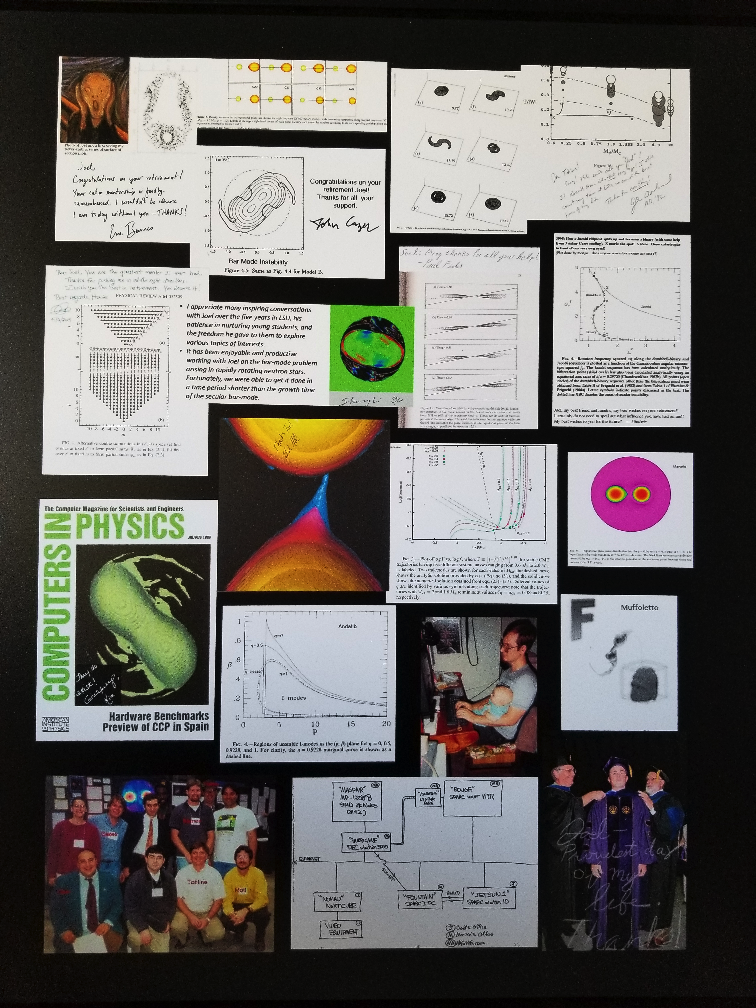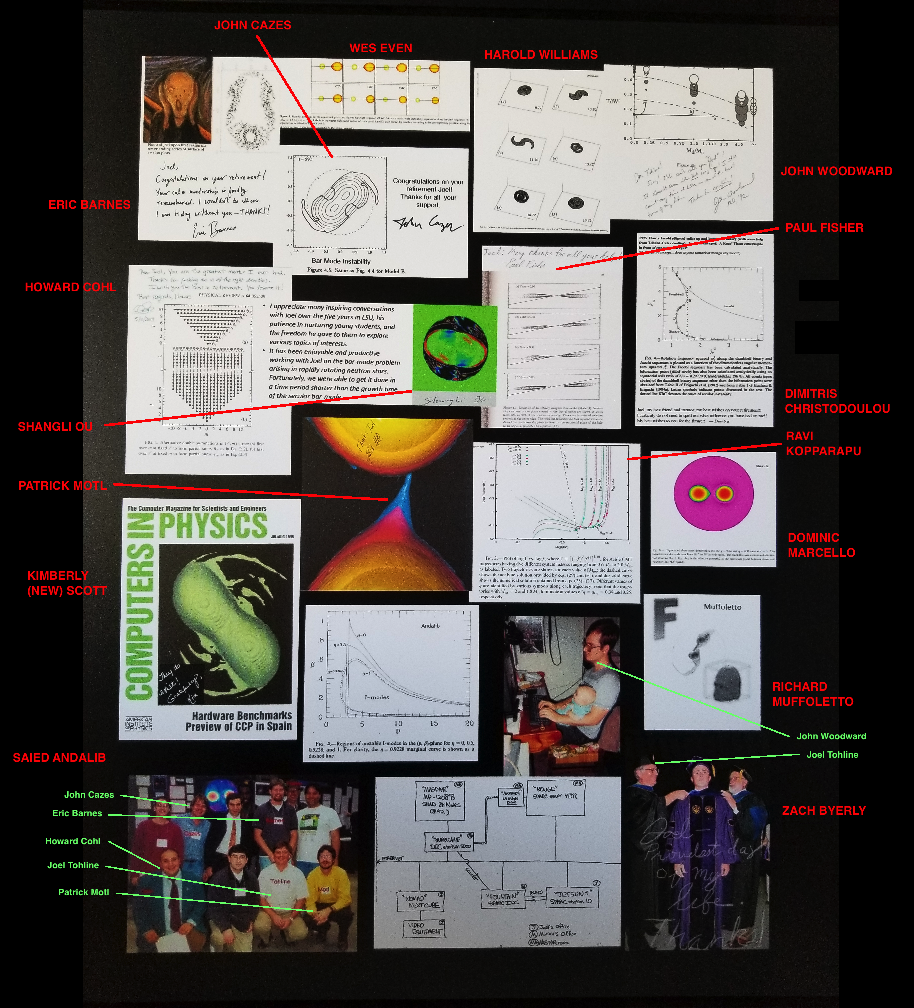| 1976 - 1978 |
Tohline's dissertation research under the guidance of Peter Bodenheimer (UCSC) and David Black (NASA/Ames) was an early attempt to examine whether of not isothermal gas clouds whose mass exceeds the Jeans mass spontaneously fragment during a phase of free-fall collapse. The adopted Eulerian computational hydrodynamics scheme was first-order donor-cell based on the 2D (axisymmetric, cylindrical-coordinate) scheme described by Black & Bodenheimer (1976) but extended by Tohline to a 3D grid; a typical simulation was carried out on the CDC7600 at NASA/Ames and involved <math>~30^3 \approx 3 \times 10^4</math> grid cells. The self-consistently determined, time-dependent Newtonian gravitational potential was determined by combining (1) an FFT technique in the azimuthal coordinate direction, with (2) a Buneman Cyclic Reduction technique in R and Z.
Richard Durisen — a NASA/Ames postdoc at the time — said to me something along the lines of, "Hey! When you finish developing that hydrocode, let's get together and examine the dynamical stability of rapidly rotating, equilibrium configurations."
|
sf |
♦ |
-- |
-- |
TBD |
| 1978 - 1982 |
While at Yale University (1978 - 1980) and at Los Alamos National Laboratory (1980 - 1982), Tohline worked closely with Richard Durisen (Indiana University) to examine the onset and nonlinear development of nonaxisymmetric instabilities in differentially rotating, n = 3/2 polytropes whose internal angular momentum distribution was that of an n' = 0 sequence. Generally speaking, unstable eigenfrequencies matched earlier predictions (by other groups) based on linear stability analyses; unstable eigenfunctions displayed a two-armed spiral character. As the amplitude of unstable modes grew to nonlinear amplitude, the developed spiral arms were able to effectively redistribution angular momentum, preventing fragmentation/fission of the configurations.
Nelson Caldwell — a Yale graduate student at the time — showed Tohline some of his early work focused on the observationally determined properties of elliptical galaxies that display prominent dust lanes. Additional discussions led to a collaboration between Caldwell, Tohline, and Gregory Simonson — also a Yale graduate student at the time — in which the observed orientation of dust lanes can be explained in terms of dissipative settling of gas disks and, as a consequence, can be used to deduce the underlying geometry (e.g., oblate or prolate spheroidal) of each galaxy's mass distribution. With guidance from Tohline, Simonson completed a Yale University doctoral dissertation in which this settling model was extended to the context of polar rings in spiral galaxies.
|
sf, gd |
-- |
-- |
-- |
TBD |



